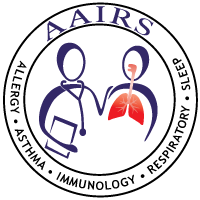Definition
Diffuse interstitial lung disease is a group of lung disorders in which the deep lung tissues become inflamed and then damaged.
Alternative Names
Diffuse parenchymal lung disease; Alveolitis; Idiopathic pulmonary pneumonitis (IPP)
Causes
The lungs contain tiny air sacs (alveoli), which is where oxygen is absorbed. These air sacs open up or expand with each breath.
The tissue around these air sacs is called the interstitium. In people with interstitial lung disease, this tissue becomes stiff or scarred, and the air sacs are not able to expand as much. As a result, not as much oxygen can get to your body.
Interstitial lung disease (ILD) can occur without a known cause. This is called idiopathic ILD. Idiopathic pulmonary fibrosis (IPF) is the most common of this type.
There are also dozens of known causes of ILD, including:
- Autoimmune diseases (in which the immune system attacks the body) such as lupus, rheumatoid arthritis, sarcoidosis, and scleroderma
- Medications (such as nitrofurantoin, sulfonamides, bleomycin, amiodarone, methotrexate, gold, infliximab, and etanercept)
- Radiation therapy to the chest
- Working with or around asbestos, coal dust, cotton dust, and silica dust (called occupational lung disease)
Cigarette smoking may increase the risk of developing some forms of ILD and may cause the disease to be more severe.
Symptoms
Shortness of breath is a main symptom of interstitial lung disease. You may breathe faster or need to take deep breaths.
- At first, shortness of breath may not be severe and you may only notice it with exercise, climbing stairs, and other hard activities.
- Over time, you may notice it while bathing or dressing, and then while eating or talking.
Most people with this condition also have a dry cough. A dry cough means you do not cough up any mucus or sputum.
Over time, weight loss, muscle and joint pain, and fatigue are also present.
People with more advanced ILD may have:
- Abnormal enlargement of the base of the fingernails (clubbing)
- Blue color of the lips, skin, or fingernails due to low blood oxygen levels (cyanosis)
Exams and Tests
The health care provider will perform a physical exam. Dry, crackling breath sounds may be heard when listening to the chest with a stethoscope.
The following tests may be done:
- Blood tests to check for connective tissue diseases
- Bronchoscopy with or without biopsy
- Chest x-ray
- CT scan of the chest
- Open lung biopsy
- Measurement of the blood oxygen level at rest or when active
- Pulmonary function tests
People who are heavily exposed to known causes of lung disease in the workplace are usually routinely screened for lung disease. These jobs include coal mining, sand blasting, and working on a ship.
Treatment
Treatment depends on the cause of the disease. Drugs that suppress the immune system and reduce swelling in the lungs are prescribed if an autoimmune disease is causing the problem.
If there is no specific treatment for the condition, therapy is aimed at making you more comfortable and supporting lung function.
- If you smoke, ask your doctor or nurse about referring you to someone who can help you stop smoking.
- People with low blood oxygen levels will receive oxygen therapy in their home. A respiratory therapist will help you set up the oxygen. Families need to learn proper oxygen storage and safety.
Lung rehabilitation can provide support, and help you learn:
- Different breathing methods
- How to set up your home to save energy
- How to eat enough calories and nutrients
- How to stay active and strong
Some patients with advanced ILD may need a lung transplant.
Outlook (Prognosis)
Some patients develop heart failure and high blood pressure in the blood vessels of their lungs.
Your chances of recovering or of the disease getting worse depend on the cause and how severe the disease was when it was first diagnosed.
Idiopathic pulmonary fibrosis has a poor outlook.
When to Contact a Medical Professional
Call your health care provider if:
- Your breathing is getting harder, faster, or more shallow than before
- You cannot get a deep breath, or need to lean forward when sitting
- You are having headaches more often
- You feel sleepy or confused
- You have a fever
- You are coughing up dark mucus
- Your fingertips or the skin around your fingernails is blue

